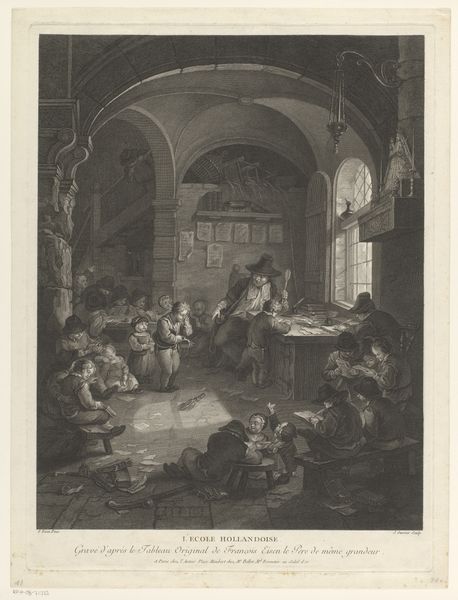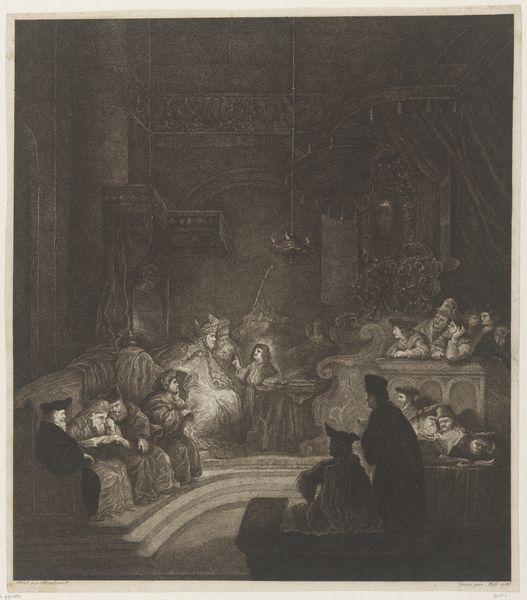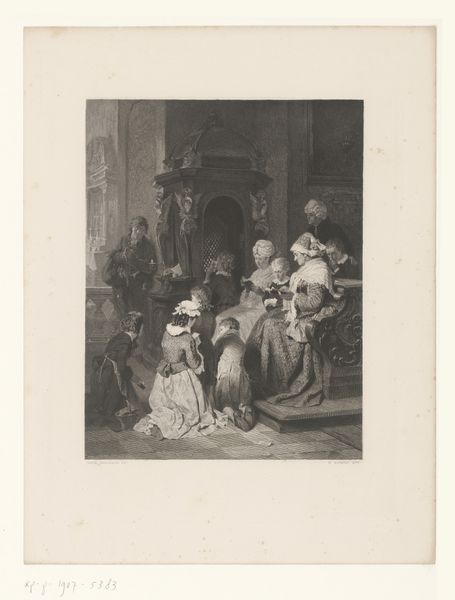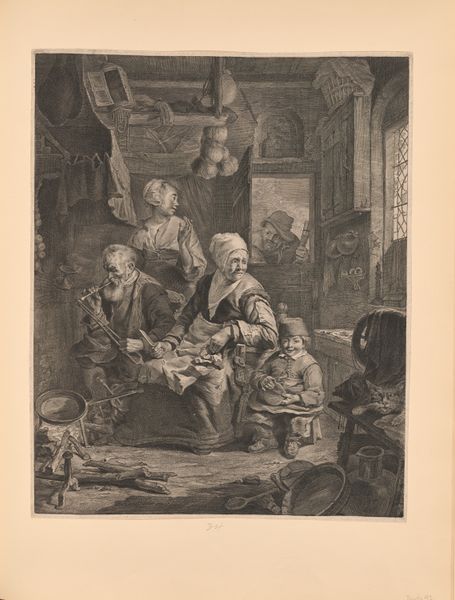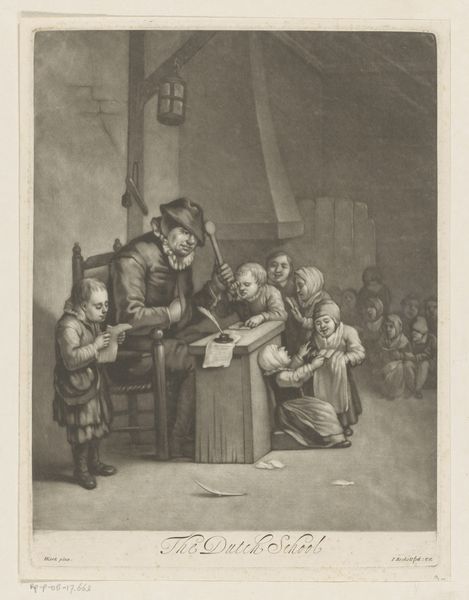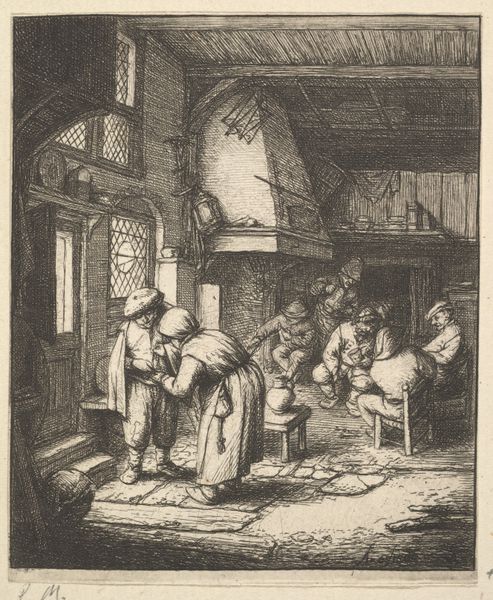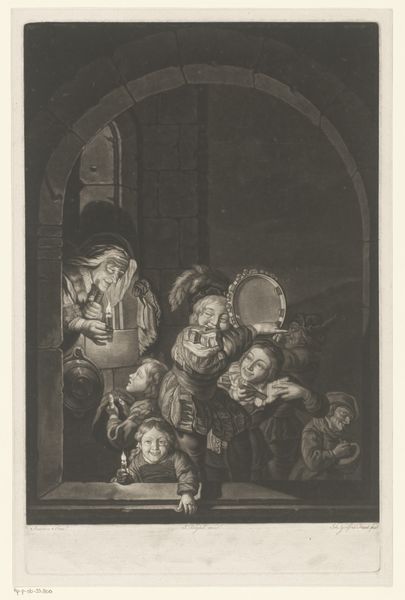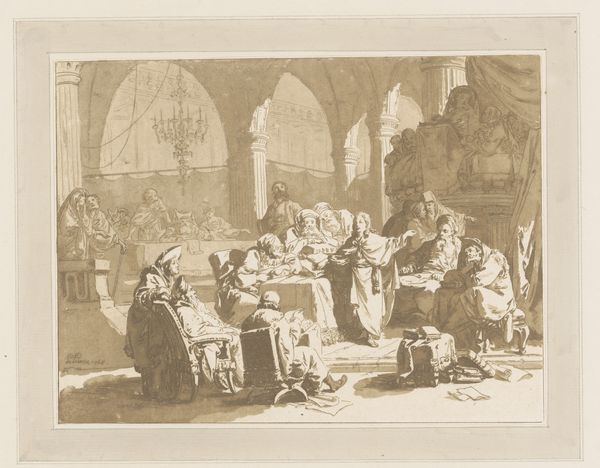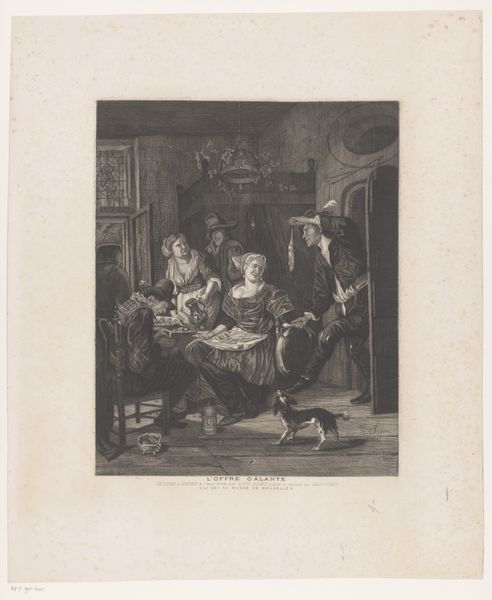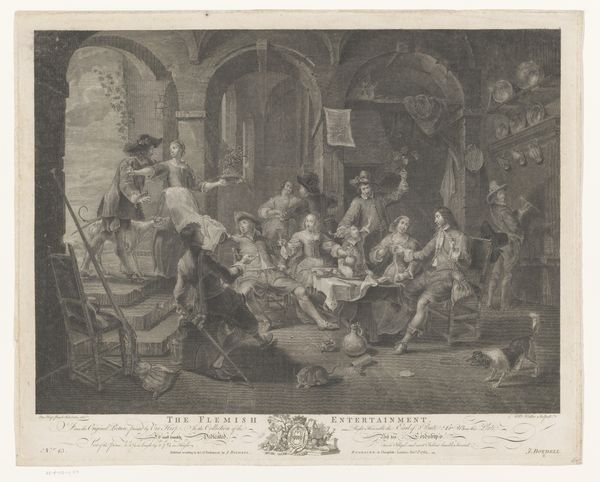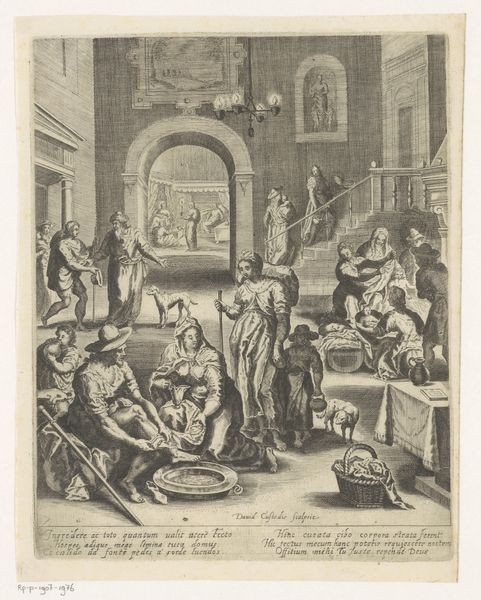
drawing, print, paper, engraving
#
drawing
#
narrative-art
#
baroque
# print
#
paper
#
line
#
genre-painting
#
engraving
Dimensions: height 518 mm, width 381 mm
Copyright: Rijks Museum: Open Domain
Editor: This print, "Leslokaal met onderwijzeres die leerling bestraft," attributed to Jean Ouvrier, dates from 1735-1784 and seems to depict a classroom setting. There's a real sense of hierarchy here, between the teacher and the students. What do you see in this piece that speaks to you? Curator: What strikes me is the visualization of power dynamics and social conditioning within the context of 18th-century education. Consider the architectural setting: it's quite severe, almost monastic. This immediately frames our understanding of learning as a disciplined, and potentially oppressive, process. How do you think the artist uses space to reinforce these ideas? Editor: I see what you mean! The students seem almost crammed into the foreground, while the teacher has this elevated position. It feels very deliberate in establishing control. Curator: Precisely! Think about how gender plays into this too. A female teacher, in a presumably religious space, is enacting these disciplinarian practices on predominantly female students. It speaks to the limited roles afforded to women, both as enforcers and subjects of societal expectations. Does the punishment itself resonate with any contemporary dialogues surrounding education? Editor: Well, corporal punishment has thankfully decreased in schools today. It makes me reflect on how we approach learning now and what we consider to be effective teaching methods, which ideally don’t involve that kind of coercion. Curator: Exactly. And consider this image within larger power structures. The print itself circulated amongst a specific social class and would reinforce or even normalize specific cultural values of that class. How do you see the art reflecting those larger power structures? Editor: This work definitely made me think about education differently and to understand its social history. Thanks for opening my eyes to that perspective! Curator: My pleasure! It’s important to examine these seemingly simple images and recognize their complex intersections of gender, class, and power.
Comments
No comments
Be the first to comment and join the conversation on the ultimate creative platform.
